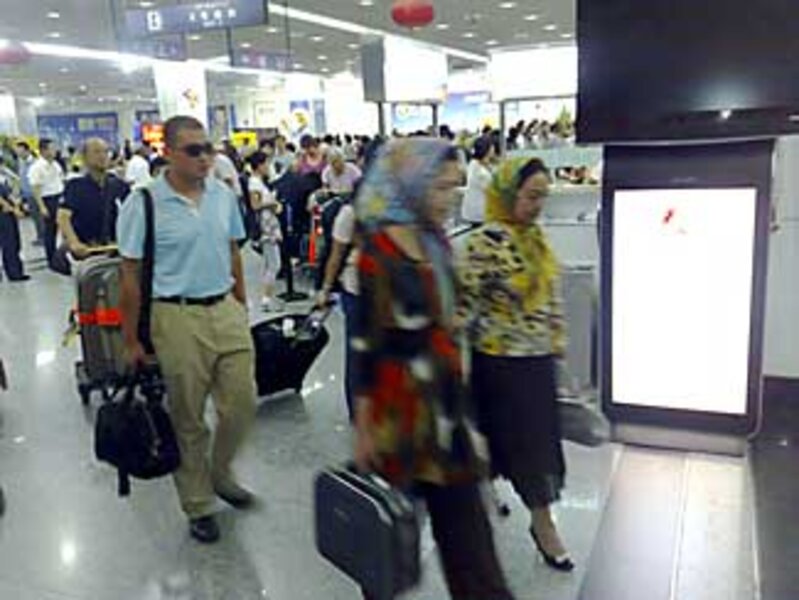For China, far west is rife with terror plots
Loading...
| Beijing
A bomb threat that forced a civilian plane to turn back Sunday on a flight from Afghanistan to western China is the latest in a series of alleged terror plots in restless Xinjiang province.
Authorities have offered no clear explanation of why the Boeing 767 carrying 168 passengers was denied permission to land in Urumqi, the city that erupted in ethnic rioting on July 5 killing nearly 200 people. No bomb was discovered, and the Afghan-operated plane successfully flew the same route on Monday.
With tensions still running high in Urumqi, the incident is a reminder of what China calls the threat of terrorism from groups like the East Turkestan Islamic Movement. In 2002, the US State Department listed ETIM as a terrorist organization after China blamed it for scores of violent attacks in the previous decade.
But China's eagerness to label any opposition group in the traditionally Muslim province as separatists or terrorists – the words are used interchangeably – has muddied the picture. Foreign experts are doubtful that ETIM or other groups are capable of mounting terror attacks and argue that most antigovernment violence is haphazard.
Terrorism provides "a ready-made template for every incident. Everything has to be supported and organized by external forces," says Nicholas Bequelin, a researcher for Human Rights Watch in Hong Kong.
China's official narrative blames the World Uyghur Congress led by US-based Rebiya Kadeer for instigating the July 5 riots.
Chinese experts say the WUC is a front for the ETIM and that it seeks to pry away Xinjiang using armed struggle, reviving an East Turkestan republic that China crushed in 1949.
"The task of the WUC is to unify [terrorist] groups into one organization," says Li Wei, director of antiterrorism research at the China Contemporary International Relations Research Institute in Beiijing.
Ms. Kadeer has denied any role in the riots, which began as antigovernment protests over the murder of Uighur workers by majority Han in southern China. Authorities in Xinjiang continue to denounce her in daily loudspeaker broadcasts, including in far-flung desert towns that barely knew of her before, according to eyewitnesses.
China is acutely sensitive to separatism in its western territories. Xinjiang's roughly 8 million Uighurs have kinship ties to ex-Soviet Central Asian republics. After the Soviet collapse in 1991, calls for self-determination echoed in the region and appeared to fan separatist violence in Xinjiang, including riots in Yining and subsequent bus bombings in Urumqi in 1997.
In March 2008, Chinese police arrested a Uighur woman who had allegedly tried to ignite gasoline on a flight from Urumqi to Beijing. Then, on the eve of the Beijing Olympics, two Uighur men in Kashgar reportedly drove a truck into a group of border police and hurled explosives at them, killing 16.
Mr. Li says terrorist cells train in the Pamir mountains and rely on allied groups in Central Asia, Europe, and the US for material support. He says China's Ministry of Public Security has provided details of hundreds of violent incidents and has issued international alerts on suspected Uighur terrorists.
That so much hinges on China's official version of events troubles Mr. Bequelin and other foreign observers. In June, US lawmakers urged a review of the classification of ETIM. Several congressmen criticized the Bush administration for offering a quid pro quo to China for support in the UN Security Council in return for blacklisting the group. A former State Department official denied the accusation.





